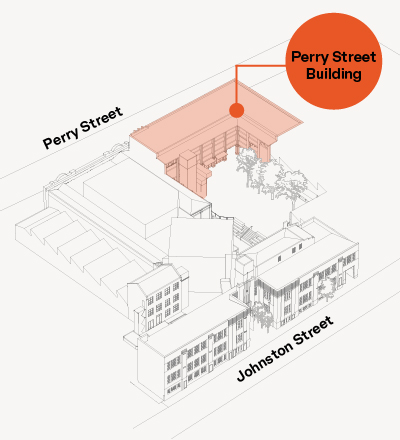Flower club by XFLOS
Design Week – Breaking the Pixel Ceiling – Presented by Play on Play Studio

Join Play On Play for an evening of thought-provoking discussion, networking, and community-building, as they reshape the narrative of creative empowerment.
Play On Play presents the latest edition of Breaking the pixel ceiling, a panel discussion that features remarkable female-identifying creatives. In this iteration, Phebe Schmidt, Gemma Mahoney, Mikaela Stafford, Grace Moore, Nina Gibbs, and Sabina McKenna share insights into their experiences in the creative industries, discussing the challenges they’ve faced and the strategies that propelled them forward. The panel will explore the intersection of running a design or freelance business and its societal impact. They’ll unpack how female and non-binary creatives can drive positive change in their communities, fostering thoughtful frameworks for an ethical future.
Participants
Play On Play (POP) is a Melbourne-based multi-disciplinary design studio rooted in the vibrant cultural landscape on the lands of the Kulin Nation. With a dedicated emphasis on diversity, POP collaborates closely with a diverse range of clients to craft work that is not just aesthetically pleasing but also rich in substance and meaning. Like a toast in the spirit of their namesake, POP raise their glass in favour of playful experimentation across art direction, branding, publication layout and graphics for the film and music industries.
Gemma Mahoney is a freelance graphic designer and founder of Rise, an online movement and mindfulness platform. Gemma is a multidisciplinary graphic designer working across brand identity, creative direction and typography for caring brands, in Australia and overseas. With Rise, her design skills and philosophies led her to championing the importance of design and aesthetics in the fitness space. Responding to the notion that good design improves lives.
Grace Moore is a writer and director from the lands of the Kulin Nation, specialising in documentary, music, advertising and narrative films. Her work has been screened at ACMI Melbourne, the L.A and Toronto Dance Film Festivals and a documentary she filmed, Willow and Claude, won best documentary at the Amsterdam Fashion Film Festival. She is a development producer on the feature documentary Body Heat about First Nations music producers and her debut short film Backspin will shoot later this year.
Mikaela Stafford is a self taught 3D motion graphics artist with a particular interest in public art. Her work explores themes of speculative futures and is particularly interested in the complex relationships between humans, technology and nature. Stafford believes exploring the intersections of these realms can provide possible pathways for reconnection to the natural world through the use of digital technologies. Consequently, her work recognises the interconnectedness and interdependence between the digital and physical realms.
Nina Gibbes is a graphic designer with an interest in feminism, publication design and collaborative practice. Her work spans cultural projects, exhibitions, publications, typography, branding for not-for-profit organisations and small businesses, commissioned artworks, and music. She currently works as a visual designer at R/GA, balancing her work in digital design with her independent practice.
With a background in stylised character-based photography that draws on the surrealism of glamour and consumption, Phebe moved into film direction, bringing her eye for distinctive and thought provoking imagery to the screen. She has over a decade of industry experience and a rare ability to approach complex topics with a playful sense of humour, often exploring the absurd nature of beliefs surrounding authenticity, aesthetics and identity. Her unique visual language spans commercial work for clients such as UN Women, Mountain Goat, Nike, The Iconic, acclaimed national and international publications from Vogue to Vault and exhibits in galleries such as MONA and Art Space.
Sabina McKenna is an Australian writer and curator of Nigerian-Irish heritage. She is the creator of The Where Are You From? project, a photojournalistic series about cultural identity. Sabina writes predominantly in interview style and has been featured locally and internationally in publications that include Youtime, The Big Issue, Partial Magazine, Frankie, Art Almanac, Broadsheet, Fashion Journal, and Archer among many others.
Venue
Perry Street Building
Collingwood Yards
Collingwood, 3066

Accessibility
Floor access to the Perry Street Building can be made via the following paths. From 30A Perry Street, a footpath leads to the retail area of Perry St (UG) and courtyard. The Perry Street Lift can be accessed via 30A and 30B Perry Street, allowing access to levels 1 and 2 of Perry Street Building. From Johnston Street access to Perry St Building can be made by crossing the courtyard.
Accessible toilets are located in three areas within the Perry Street Building. On the Upper Ground Level (Level UG) the accessible toilets are located in the service corridor in the northern part of the Building. near the staircase. These toilets are open throughout event hours. On L1 and L2 the toilets are located in the northern part of the building, behind heavy manual blue double doors. All accessible toilets are equipped with manual locks, exit buttons and grab rails.